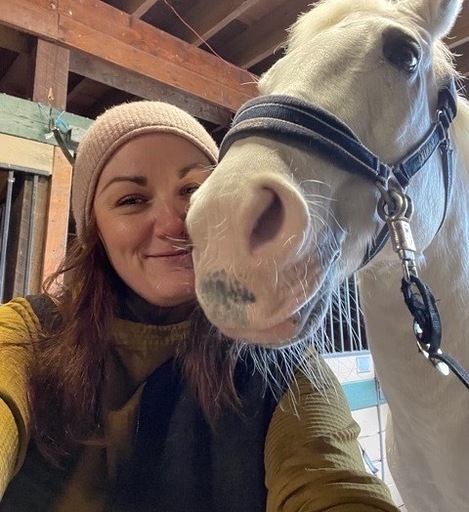On an average morning in early 2020, sales reps left their team huddles pumped up on yesterday’s success stories and a few cups of dark roast, ready to start dialing for the day. They had a system of tried-and-true tactics for making sales calls and historical data that supported what worked best.
Then the COVID-19 pandemic hit. Suddenly, cold calling — one of the most challenging parts of sales — got tougher. Sound familiar?
It’s not just you. In today’s environment, it’s getting harder to connect with prospects on a cold call. In an analysis of more than 35 million calls, ZoomInfo’s Chorus team saw a 15% drop in average quarterly cold-call connect rates by the end of 2020.
“When the COVID shutdown was in full effect, everything went digital. Field work went away because events went away, and field sales and outside sales all went away or went inside,” says Nina Wooten, director of demand generation at ZoomInfo. “Suddenly, there was a lot more noise, and every sales rep had to do a lot more.”
Reps now had to compete for limited attention using fewer channels — no trade shows and conferences — and contend with more competition in the channels that remained, primarily phone calls and emails.
Even with lower connection rates, cold calling remains essential: 41% of salespeople say the phone is still their most effective tool. But COVID has changed the context — instead of an office, your prospects may be answering phone calls from their dining room table or between loads of laundry.
Here are a few tips to boost your COVID-era call connect rates and some tactics for shaking things up for your team.
The Best Times to Make Sales Calls: Time-Tested Advice
Sales industry experts have spent years trying to determine the best times and days to make sales calls. And while COVID has changed many of the most well-worn traditions for white-collar work, some advice on when to make sales calls has remained pretty durable.
Best Days to Make Sales Calls
Prospects with typical Monday-Friday work weeks are most likely to respond to calls on Wednesdays and Thursdays. The worst day to call? Monday, when first calls are 50% less likely to turn into a conversation compared to Wednesday. Fridays fare almost as poorly.
Post-COVID schedules have changed significantly, but your prospects are probably still busiest on Mondays as they begin their workweek, and eyeing their weekend R&R time on Fridays.
Best Time of Day to Call Prospects
Take a peek at your calendar. You’re likely scheduled in meetings in half-hour or hour increments. “People don’t get out of meetings at 10:12 a.m., but they might get out a little bit before 10:30,” Vital says. “Try calling at 10:28 a.m., when they might have ended a meeting early and have time to chat before taking on their next to-do.”
Trying to reach the C-suite? Send an email at nontraditional hours, such as very early in the morning, or late Sunday night where you might have less competition.
How Long Should Sales Calls Take?
While the average cold call lasts only 80 seconds, according to recent Chorus data, calls that last more than two minutes — when you’re probably on your way to booking a first meeting or demo — take place between 9-10 a.m. on Tuesdays and 3-5 p.m. on Thursdays. Caveat: because these times are the sales industry standard, the best times to make sales calls can also be the most competitive times to call, so you may want to incorporate calling during off-peak hours to boost your chances of getting through.
New Cold-Calling Strategies for 2022
The disruptions to working life caused by COVID have changed how sales teams work — in some cases, permanently. Here’s some advice from B2B sales experts on how COVID has changed the best times and days to make cold calls, and how to orient sales teams in response to the new reality.
1. Adapt to prospects’ new ways of working
Brian Vital, vice president of sales development at ZoomInfo, says the disruptions caused by COVID have made it important to test new tactics.
Use mobile numbers to keep your connect rates high. Workers are increasingly using their cell phones as their work phones, and many have their old desk lines forwarded to their mobile numbers.
Call during lunch. Although industry studies have typically shown connect rates dwindling during the lunch hour, most of the data is from a time when all prospects were in the office. But remote workers, particularly individual contributors, sitting at their dining room table? They might be willing to pick up the phone during this time.
Do your prospects still have a commute? They may be more likely to take a call and talk while in the car.
2. Time your outreach sequence
“It’s all about options. You want to send an email, make a call, and send a note on LinkedIn. You have to spread out your efforts because people will respond to different tactics and channels,” Wooten says.
Supporting these critical multi-touch, multi-channel campaigns calls for sales automation software. Automated outreach allows SDRs and their managers to A/B test sequences to clearly identify and replicate sales motions that work.
For example, if your team generally is a call-first shop, test sequences that serve up an email first, allowing your first call to refer to an email your prospect has in their inbox.
Even better, you can set up alerts in sales automation software to fire when your prospect has opened your email or clicked through to an e-book you shared. This turns your subsequent outreach into a warm call that can reference the content they just engaged with.
3. Capitalize on real-time integration
Sales automation software that integrates seamlessly with CRM software, like Salesforce, also allows you to take quick action on leads when your prospect’s interest is the highest. Consider establishing best practices for your team so they’re calling prospects within minutes of a form submission.
“Generally speaking, the best time to make sales calls is right after someone has engaged with a form,” says Vital, who recommends a service-level agreement as short as five minutes after a prospect hits the submit button.
4. Take a look at historical and real-time data
Unprecedented times aside, there are instances when looking at historical data is still helpful. You can use business intelligence software, such as ZoomInfo Sales, to filter your prospecting list to the last time you successfully connected with someone, bucket them into similar times, and engage with them again during that time.
You can also leverage real-time insights from business intelligence to identify potential buying behavior and buying intent to time your sales call with your prospects searching for the solution you offer.
“Looking at buying behavior and other signals adds context to our calls,” Wooten says. “When we connect on a sales call now, the right time isn’t just a time of day, it’s the right time to meet a prospect’s needs.”
Historical data can also inform re-engagement campaigns. Your team can go back to closed/dead opportunities, piggyback on previous engagement times and days, and leverage a previous relationship to boost connection rates. The prospecting drip doesn’t need to be extended. If anything, there is an opportunity to condense it, becoming more efficient by using intent data from your business intelligence tools.
“You’re not changing what you’re doing. You’re still making a sales call, but you’re changing how you’re doing it by re-engaging your prospects based on their behavior. You can now call them because they’re a good fit and they just got a new funding source, or they’re new in their role, so a lead might be cold but it isn’t frozen,” Wooten says.


